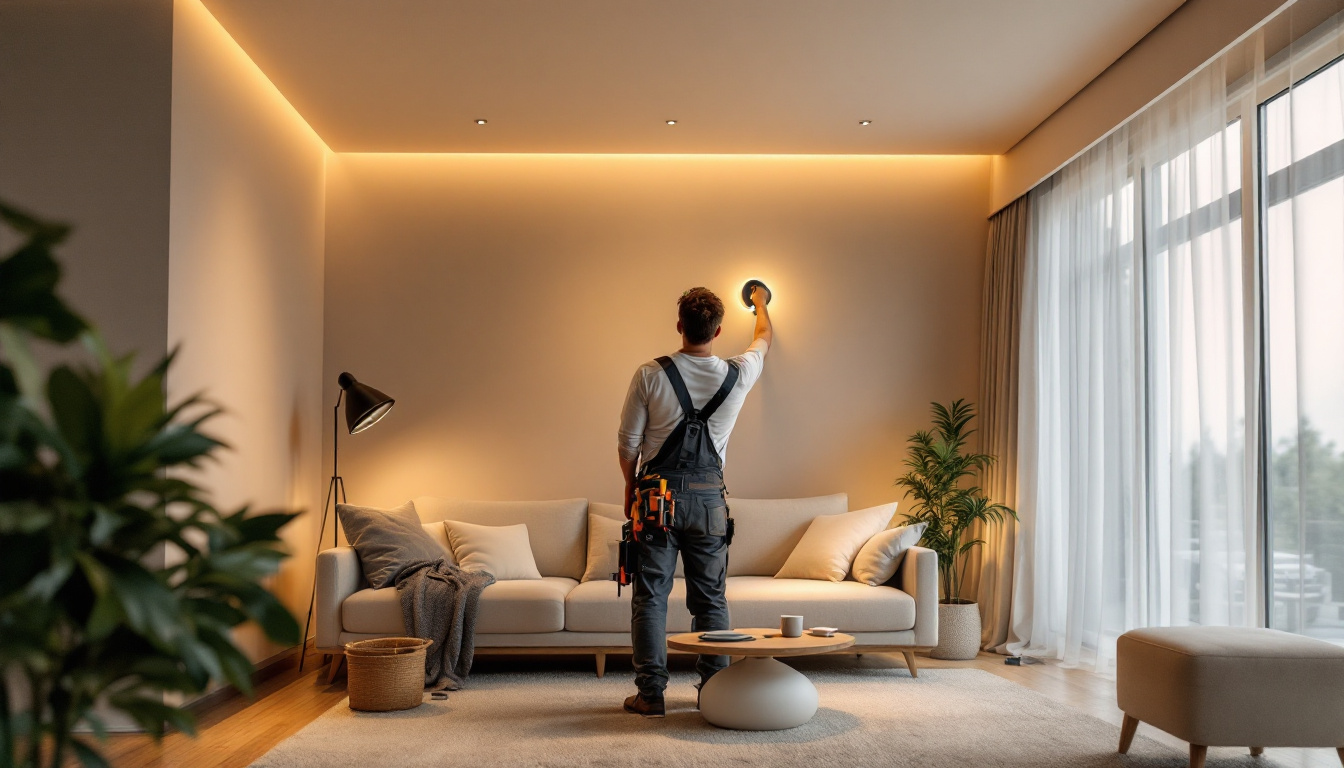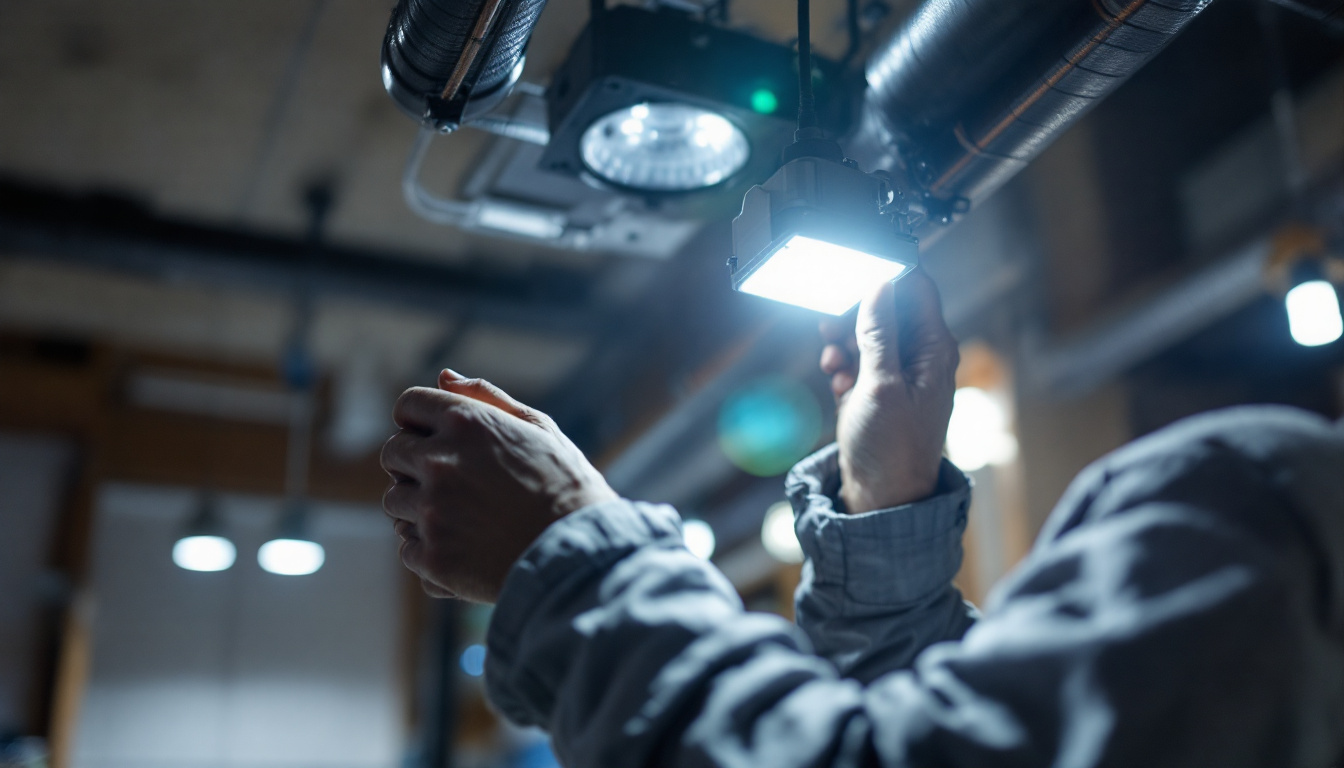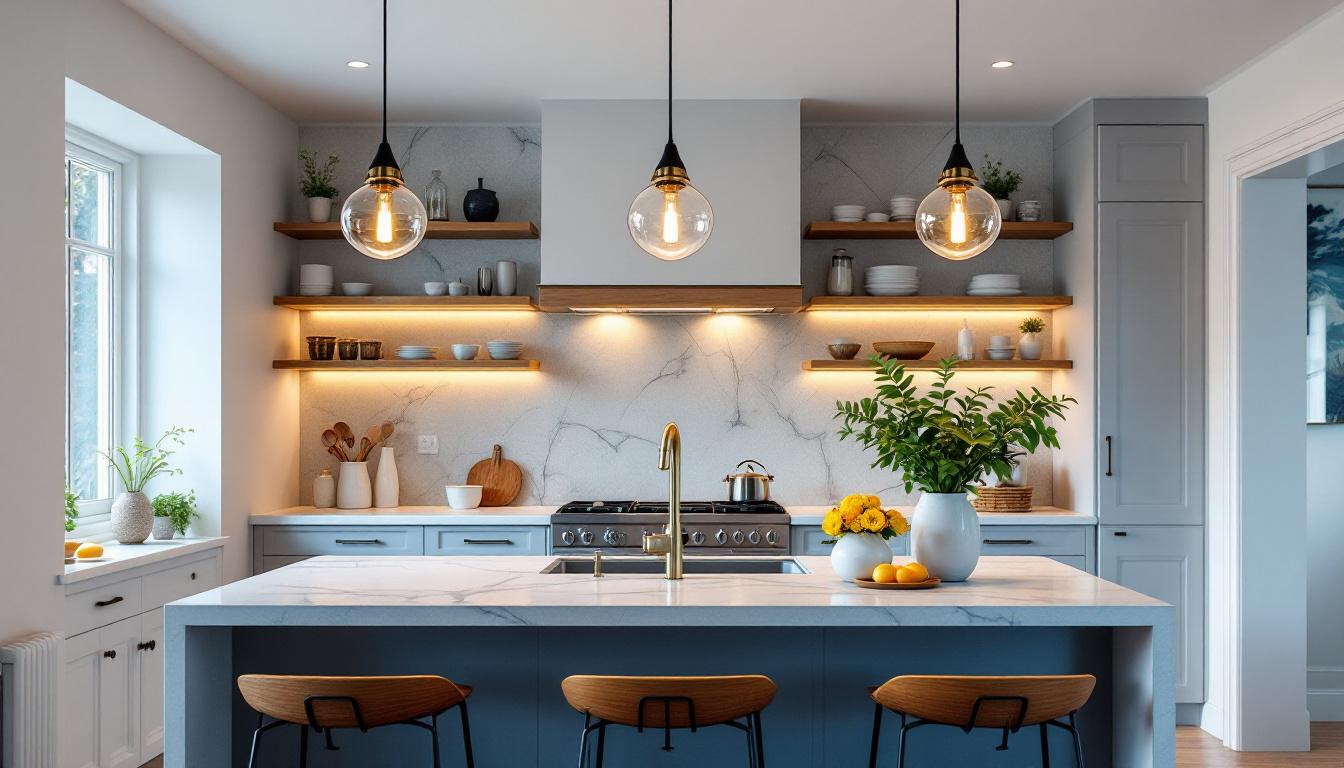
In the realm of industrial facilities, lighting plays a crucial role not only in safety and productivity but also in energy consumption. The term “industrial lighting vanity” refers to the aesthetic choices made in lighting design, which can significantly impact energy efficiency. This article delves into the nuances of industrial lighting vanity, exploring its implications for energy savings and overall operational effectiveness.
Energy efficiency is a pressing concern in industrial environments, where lighting often constitutes a substantial portion of total energy usage. With rising energy costs and increasing environmental awareness, optimizing lighting systems has become a priority for many businesses. Understanding the balance between aesthetic appeal and functional efficiency is essential for lighting contractors aiming to meet client needs while adhering to sustainability goals.
Energy efficiency refers to using less energy to provide the same level of service. In the context of industrial lighting, this means achieving adequate illumination while minimizing energy consumption. This can be accomplished through various means, including the selection of energy-efficient fixtures, the implementation of smart lighting controls, and the strategic placement of lighting sources. Additionally, adopting LED technology has revolutionized the industry, providing longer lifespans and lower heat output compared to traditional incandescent and fluorescent bulbs. This shift not only reduces energy use but also minimizes maintenance costs, as fewer replacements are needed over time.
Investing in energy-efficient lighting solutions yields numerous benefits. Firstly, it leads to significant cost savings on energy bills, allowing companies to allocate resources to other critical areas. Secondly, energy-efficient lighting contributes to a reduced carbon footprint, aligning with corporate sustainability goals. Lastly, improved lighting quality can enhance worker productivity and safety, further justifying the investment. Furthermore, energy-efficient systems often come equipped with advanced features such as motion sensors and dimming capabilities, which can further optimize energy use by ensuring that lights are only on when needed. This adaptability not only conserves energy but also creates a more comfortable and responsive work environment, ultimately benefiting both employees and employers alike.
Industrial lighting vanity encompasses the aesthetic aspects of lighting design within industrial settings. While functionality is paramount, the visual appeal of lighting can influence the overall atmosphere and perception of a facility. Striking the right balance between aesthetics and energy efficiency is key to creating an effective lighting strategy. The right lighting can transform a stark, utilitarian space into an engaging environment that inspires creativity and innovation among workers.
In recent years, there has been a growing trend towards integrating smart lighting technologies that not only enhance the aesthetic appeal but also optimize energy consumption. These systems can adjust brightness based on the time of day or occupancy levels, ensuring that energy is not wasted while still providing a visually pleasing environment. This evolution in industrial lighting design reflects a broader commitment to sustainability and environmental responsibility, aligning with corporate social responsibility goals that many organizations are now prioritizing.
Aesthetics in industrial lighting can significantly affect employee morale and productivity. Well-designed lighting can create a more inviting and stimulating work environment, leading to higher job satisfaction. Additionally, aesthetically pleasing lighting can enhance the brand image of a company, making it more attractive to clients and visitors. For instance, using warm color temperatures can create a cozy atmosphere, while cooler tones can promote alertness and focus, allowing businesses to tailor their lighting to the specific needs of their workforce.
Moreover, the strategic use of color and design in lighting can also play a crucial role in safety and functionality. For example, incorporating color-coded lighting in warehouses can help in identifying different zones or pathways, reducing the risk of accidents. This not only improves the aesthetic appeal but also enhances operational efficiency, demonstrating that aesthetics and functionality can indeed go hand in hand in an industrial setting.
While aesthetics are important, they can sometimes come at the cost of energy efficiency. For example, using decorative fixtures that consume more energy can lead to higher operational costs. Lighting contractors must navigate these challenges by selecting fixtures that provide both visual appeal and energy savings. This often requires a deep understanding of available technologies and design principles. The emergence of LED technology has been a game-changer in this regard, offering a wide range of designs that do not compromise on efficiency.
Additionally, the challenge of balancing aesthetics and efficiency is further complicated by the diverse range of industrial environments. From manufacturing plants to creative studios, each space has unique lighting needs that must be addressed. Designers must consider factors such as ceiling height, surface materials, and the specific tasks being performed in each area. This complexity necessitates a collaborative approach, where lighting designers, architects, and facility managers work together to create solutions that are not only visually appealing but also practical and sustainable.
Fortunately, advancements in lighting technology have paved the way for innovative solutions that marry aesthetics with energy efficiency. From LED technology to smart lighting systems, there are numerous options available to lighting contractors seeking to enhance industrial spaces.
LED lighting has revolutionized the industrial sector, offering significant energy savings compared to traditional lighting sources. LEDs consume less power, have a longer lifespan, and produce less heat, making them ideal for industrial applications. Additionally, they come in a variety of styles and designs, allowing for creative lighting solutions that do not compromise on aesthetics.
Smart lighting systems utilize sensors and automation to optimize energy usage. These systems can adjust lighting levels based on occupancy and natural light availability, ensuring that energy is not wasted. For instance, in a warehouse setting, lights can dim or turn off in unoccupied areas, leading to substantial energy savings. Integrating smart technology into lighting design not only enhances efficiency but also adds a modern touch to the facility.
Real-world examples can provide valuable insights into the impact of industrial lighting vanity on energy efficiency. Several companies have successfully implemented energy-efficient lighting solutions that enhance both aesthetics and functionality.
A manufacturing facility recently undertook a lighting overhaul to improve energy efficiency and aesthetics. By replacing outdated fluorescent fixtures with LED alternatives, the company reduced its energy consumption by over 60%. The new lighting design not only provided better illumination for workers but also created a more modern and appealing environment. This transformation led to increased employee satisfaction and productivity, demonstrating the benefits of a well-balanced approach to industrial lighting.
In another case, a large warehouse implemented a smart lighting system that utilized motion sensors and daylight harvesting technology. By automatically adjusting lighting levels based on occupancy and available natural light, the warehouse achieved a 40% reduction in energy costs. The aesthetic impact was also notable, as the new lighting design highlighted key areas of the facility, enhancing its overall appearance.
For lighting contractors, understanding the interplay between industrial lighting vanity and energy efficiency is crucial. Implementing best practices can lead to successful projects that meet client expectations while promoting sustainability.
Before embarking on a lighting project, conducting a thorough energy audit is essential. This process helps identify areas of improvement and provides a baseline for measuring energy savings post-implementation. By understanding current energy usage patterns, contractors can make informed decisions about lighting design and technology selection.
Involving clients in the design process fosters collaboration and ensures that their aesthetic preferences are considered alongside energy efficiency goals. Presenting various lighting options and discussing their implications can lead to a more satisfying outcome for all parties involved. This collaborative approach can also help clients understand the long-term benefits of investing in energy-efficient solutions.
The lighting industry is continually evolving, with new technologies and design trends emerging regularly. Staying informed about these developments allows contractors to offer the most up-to-date solutions to their clients. Engaging in professional development opportunities, attending industry conferences, and participating in online forums can help contractors remain at the forefront of the industry.
The future of industrial lighting is bright, with ongoing advancements in technology and design. As companies increasingly prioritize sustainability, the demand for energy-efficient lighting solutions will continue to grow. Lighting contractors play a pivotal role in shaping this future by providing innovative solutions that meet both aesthetic and functional requirements.
Emerging technologies, such as human-centric lighting and advanced control systems, promise to revolutionize the way industrial lighting is approached. Human-centric lighting focuses on creating environments that support human health and well-being, while advanced control systems offer unprecedented levels of customization and efficiency. These innovations will likely become integral components of future industrial lighting designs.
As energy efficiency becomes a regulatory focus, lighting contractors must stay abreast of changes in standards and codes. Compliance with these regulations not only ensures legal adherence but also positions contractors as leaders in sustainable practices. Understanding the implications of these regulations will be essential for successful project execution in the evolving landscape of industrial lighting.
Industrial lighting vanity significantly impacts energy efficiency, making it a critical consideration for lighting contractors. By understanding the balance between aesthetics and functionality, contractors can provide solutions that enhance both the visual appeal and energy performance of industrial spaces. Embracing innovative technologies, engaging clients in the design process, and staying informed about industry trends will position contractors for success in an increasingly competitive market. The future of industrial lighting holds immense potential, and those who adapt to these changes will lead the way in creating sustainable, efficient, and aesthetically pleasing environments.
Ready to elevate your industrial lighting projects with the perfect blend of aesthetics and energy efficiency? Look no further than LumenWholesale, where we offer contractors an unparalleled selection of top-quality, spec-grade lighting products at wholesale prices. Say goodbye to inflated markups and hello to reliable, high-performance lighting that meets the highest industry standards. With free shipping on bulk orders, you can trust that you’re getting premium lighting at the best value. Don’t compromise on quality or cost—visit LumenWholesale today and experience the ease of obtaining superior lighting solutions for your next project.

Discover the frequent pitfalls lighting contractors face when installing LED room lights.

Discover the top strategies lighting contractors use to transform gardens with solar lights.

Discover the essentials of ballast lights with our comprehensive guide tailored for lighting contractors.

Discover expert tips and insights on choosing and installing pendulum lights in kitchens.